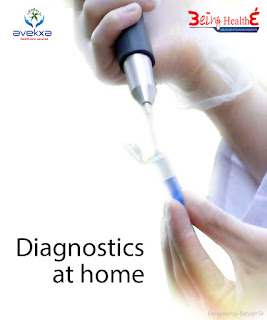The market is increasing for point-of-care testing with the growth of boundary -less hospitals and community care and the need for rapid results outside of the clinical setting. Point-of-care testing serves a pivotal function for delivering precision medicine that will both improve quality and affordability of care at a time when outcomes-based medicine is the new model for healthcare. Point-of-care molecular testing is also a rapidly expanding market. A variety
of technologies are being developed for DNA detection and amplification, mostly aiming to detect pathogens. The challenges associated with developing POC molecular tests include the additional steps for sample pretreatment
(e.g., cell sorting, isolation, and lysis) and the requirements for nucleic acid extraction and signal amplification, and sample-prep integration with a complete analytical process that does not require skilled operator involvement, and the need for fast results. In particular, true portability remains a moving target, as most current devices tend to be at least shoe box sized, may depend on external power sources drive thermal cycling for conventional PCR.
Now that device manufacturers have found a way to fit PCR and other nucleic acid amplification techniques into easy-to-use, counter-top instruments, a dozen or more companies likely will rush to develop new products. The first comm¬ercial version of a real-time nucleic acid detection system was Cepheid's Gene¬Xpert system, designed to purify, concentrate, detect, and identify targeted nucleic acid sequences delivering diagnoses from unprocessed samples in approximately 30 minutes. The ability of this relatively small bench-top device
to perform real-time quantitative PCR in approximately 90 minutes with minimal operator interaction offers the potential to perform rapid molecular testing in situations where the need for results is urgent.
While such devices are in development, small, benchtop systems that perform genomic analyses continue to reach the market with an increasing variety of tests that now include infectious diseases, drug responses to drugs used to treat heart disease, pharmacogenetics, hereditary genetics, and recently, cancer. Respiratory infections are likely to be among the leading applications for POC molecular diagnostics through 2020. In addition, POC molecular tests are poised to be used widely in developing countries, both for diagnosing emerging infectious diseases and for more familiar infections.
While the sensitivity and specificity of molecular diagnostics are extremely high, there is a danger of contamination and mistakes in the pre-analytical phase and in interpretation, as with any other POC test. However, investigators and clinicians anticipate that given market forces and current demand in specific markets, most notably infectious diseases, portable, hand-held, inexpensive POC devices, equivalent to currently offered full-size molecular analytical systems, will become available. These devices will aid in the detection of mutations or in the
identification of infectious agents, as well as aid in the management of patient care.





